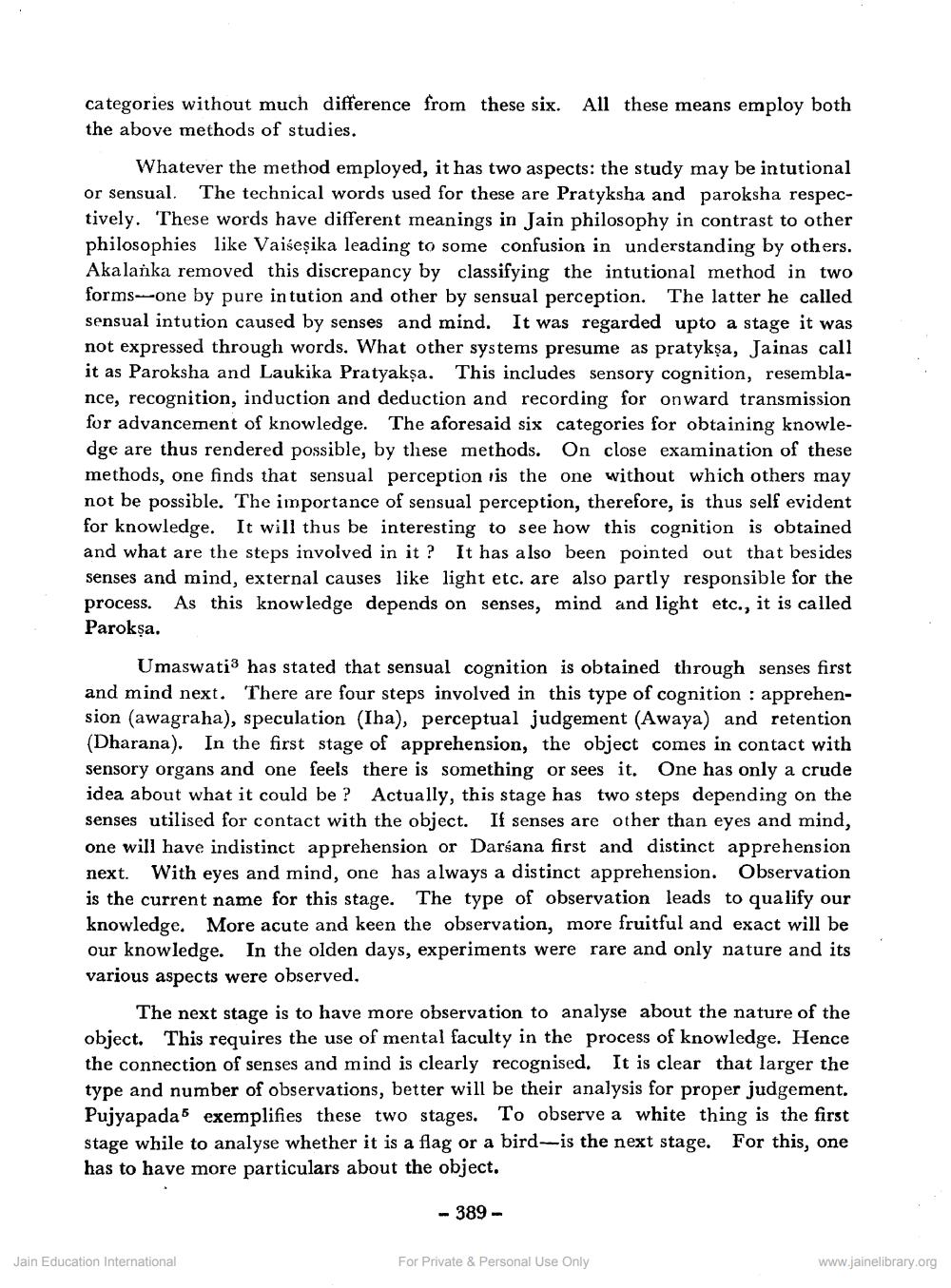Book Title: Property of Matter in Jain Canons Author(s): N L Jain Publisher: Z_Kailashchandra_Shastri_Abhinandan_Granth_012048.pdf View full book textPage 2
________________ categories without much difference from these six. All these means employ both the above methods of studies. Whatever the method employed, it has two aspects: the study may be intutional or sensual. The technical words used for these are Pratyksha and paroksha respectively. These words have different meanings in Jain philosophy in contrast to other philosophies like Vaiseșika leading to some confusion in understanding by others. Akalanka removed this discrepancy by classifying the intutional method in two forms--one by pure in tution and other by sensual perception. The latter he called sensual intution caused by senses and mind. It was regarded upto a stage it was not expressed through words. What other systems presume as pratykşa, Jainas call it as Paroksha and Laukika Pratyakşa. This includes sensory cognition, resemblance, recognition, induction and deduction and recording for onward transmission for advancement of knowledge. The aforesaid six categories for obtaining knowledge are thus rendered possible, by these methods. On close examination of these methods, one finds that sensual perception is the one without which others may not be possible. The importance of sensual perception, therefore, is thus self evident for knowledge. It will thus be interesting to see how this cognition is obtained and what are the steps involved in it? It has also been pointed out that besides senses and mind, external causes like light etc. are also partly responsible for the process. As this knowledge depends on senses, mind and light etc., it is called Parokşa. Umaswati has stated that sensual cognition is obtained through senses first and mind next. There are four steps involved in this type of cognition : apprehension (awagraha), speculation (Iha), perceptual judgement (Awaya) and retention (Dharana). In the first stage of apprehension, the object comes in contact with sensory organs and one feels there is something or sees it. One has only a crude idea about what it could be ? Actually, this stage has two steps depending on the senses utilised for contact with the object. If senses are other than eyes and mind, one will have indistinct apprehension or Darśana first and distinct apprehension next. With eyes and mind, one has always a distinct apprehension. Observation is the current name for this stage. The type of observation leads to qualify our knowledge. More acute and keen the observation, more fruitful and exact will be our knowledge. In the olden days, experiments were rare and only nature and its various aspects were observed, The next stage is to have more observation to analyse about the nature of the object. This requires the use of mental faculty in the process of knowledge. Hence the connection of senses and mind is clearly recognised. It is clear that larger the type and number of observations, better will be their analysis for proper judgement. Pujyapada 5 exemplifies these two stages. To observe a white thing is the first stage while to analyse whether it is a flag or a bird-is the next stage. For this, one has to have more particulars about the object. - 389 - Jain Education International For Private & Personal Use Only www.jainelibrary.orgPage Navigation
1 2 3 4 5 6 7 8 9 10 11 12
